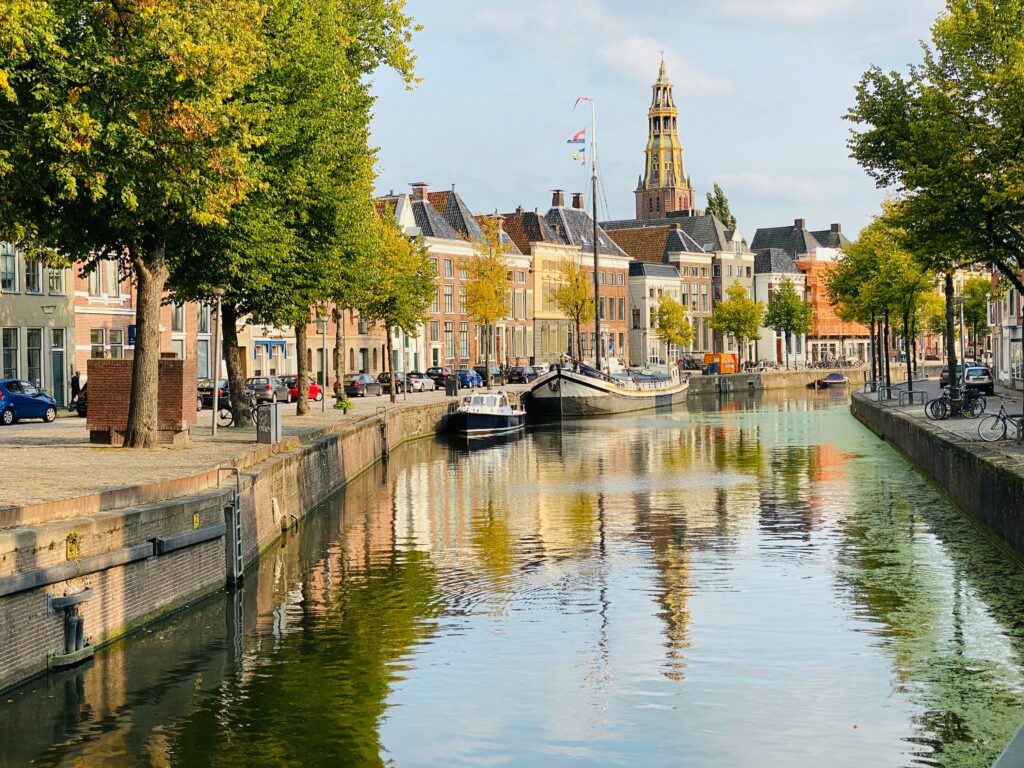Discover the history of Groningen.
Learn more about the history of Groningen by the dropdown options below. Discover what sites you can visit to learn more in the region of Groningen itself.
800 BC – First Settlement
Exhibiting findings dating back to early habitation, including archaeological artifacts.
Tip: visit the Groninger Museum to discover the history.
1040 – First Mention of Groningen
Groningen is mentioned for the first time in 1040. The Der Aa Church is one of the city’s oldest and most iconic buildings.
Tip: Visit the A-church.
13th Century – Hanseatic City
Groningen became a major trading center and joined the Hanseatic League. The Martinitoren, built in the 13th century, symbolizes this prosperous period.
Tip: visit the Martini Tower.
1400 – City Rights and Growth
Groningen was granted city rights and grew into a prominent center in the northern Netherlands.
Tip: visit the City counsil
1536 – Under Spanish Rule
Groningen came under Spanish rule during the Habsburg period. The Prinsenhof was the residence of the Spanish governor.
Tip: visit the ‘Prinsenhof and Prinsentuin’
1594 – Reduction of Groningen
Groningen was captured by the Dutch and joined the Republic of the Seven United Netherlands. The fortifications remind us of this period.
Tip: visit the Fortifications.
1614 – Establishment of the University of Groningen
One of the oldest universities in the Netherlands. The Academy Building is the historic heart of the university.
Tip: visit the Academy Building.
1672 – Siege of Groningen
In 1672, Groningen was besieged by the Bishop of Münster, Bernhard von Galen. The monument commemorates the city’s successful defense.
Tip: visit the Bommen Berend Statue.
Tip: visit Groningen during the celebrations of ‘Bommen Berend’ to see a part of history coming back alive.
1717 – Christmas Flood
In 1717, Groningen was struck by the Christmas Flood, a major storm surge that caused significant damage in the province. It was one of the most severe floods in Dutch history, with thousands of people losing their lives and villages being destroyed.
Tip: visit museum Wierdenland. Learn more about the history of the landscapes and the floods in the region.
1755 – Founding of the Groninger Society
The Groninger Society was founded as an exclusive meeting place for the city’s elite, where they gathered for discussions and exchanges on science, culture, and trade.
Tip: visit some of the historic buildings of the city.
1795 – Batavian Revolution and Changes
Groningen, like the rest of the Netherlands, became part of the Batavian Republic after the French invasion. This brought major administrative changes, including the abolition of old city rights and a centralization of government.
Tip: visit the ‘Groninger Archieven’.
19th Century – Industrialization
Groningen became an industrial hub, especially in shipping. The museum displays the city’s maritime history.
Tip: visit the Scheepvaartmuseum.
1940-1945 – World War II and Liberation
Heavily impacted during WWII, especially during its liberation in 1945. The synagogue commemorates the Jewish community that suffered greatly.
Tip: visit the Synagoge.
1945 – Post-War Reconstruction
After WWII, Groningen was rebuilt, focusing on new neighborhoods like Oosterpark.
Tip: visit the Oosterparkwijk.
1971 – Establishment of the Groninger Museum
Showcasing art and history, the current building is a modern architectural landmark.
Tip: visit the Groninger Museum.
1990s – Growth and Modernization
Opened in 2019, the Forum is a center for culture, media, and debate.
Tip: visit the Forum.
2002 – Gas Extraction and Earthquakes
Gas extraction led to earthquakes, causing damage. The wall symbolizes the fight against this damage.
Tip: visit the Separation Wall at the Garmerwolde Church.
2020s – Sustainable and Smart City
An example of sustainability and innovation, repurposing old industrial space for creative projects.
Tip: visit the Suikerfabriek Grounds.

